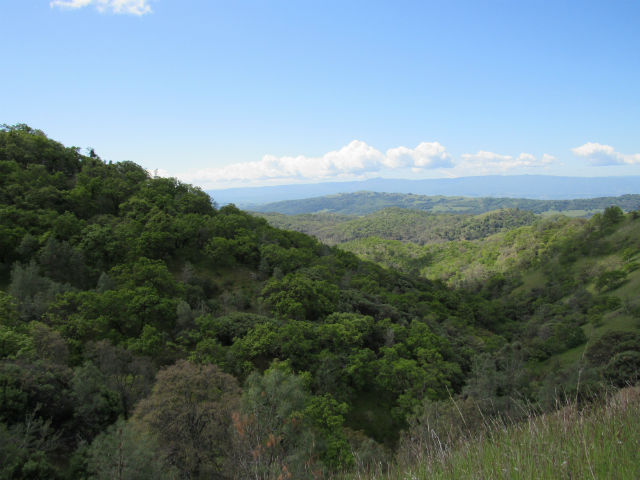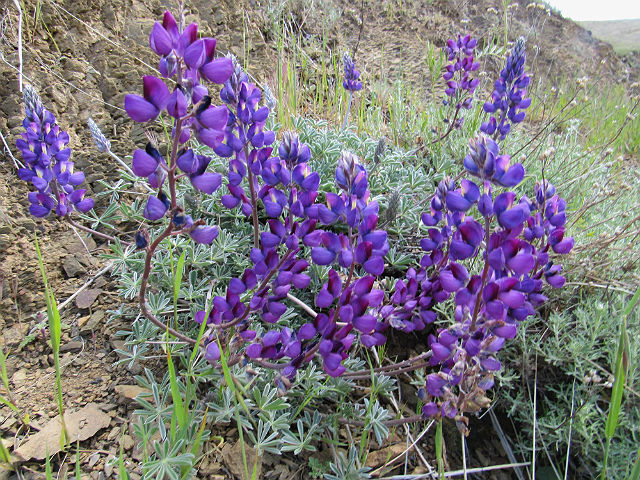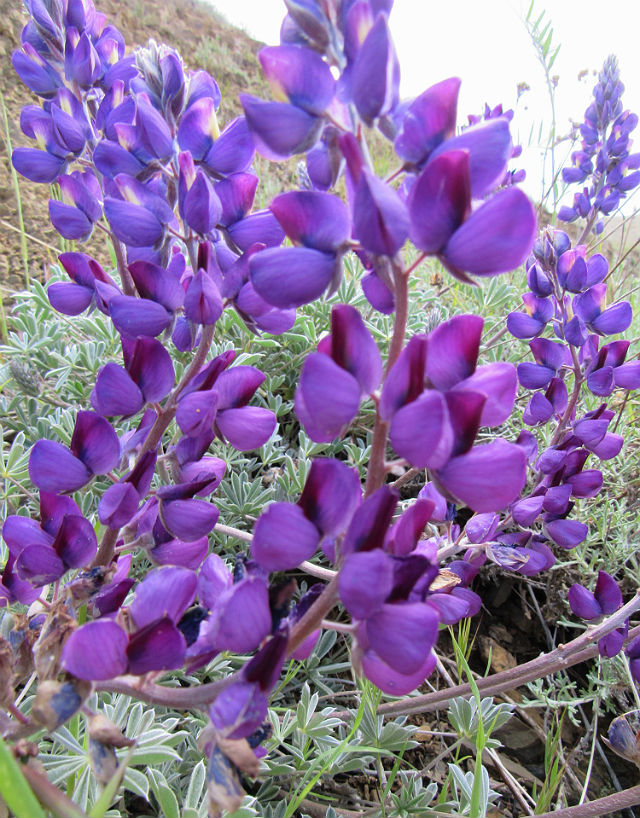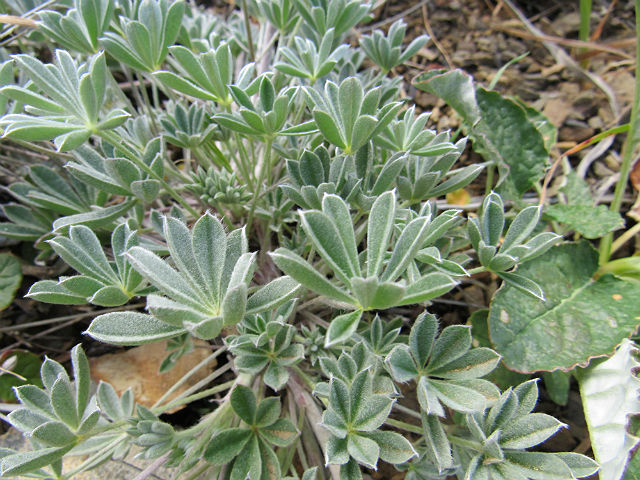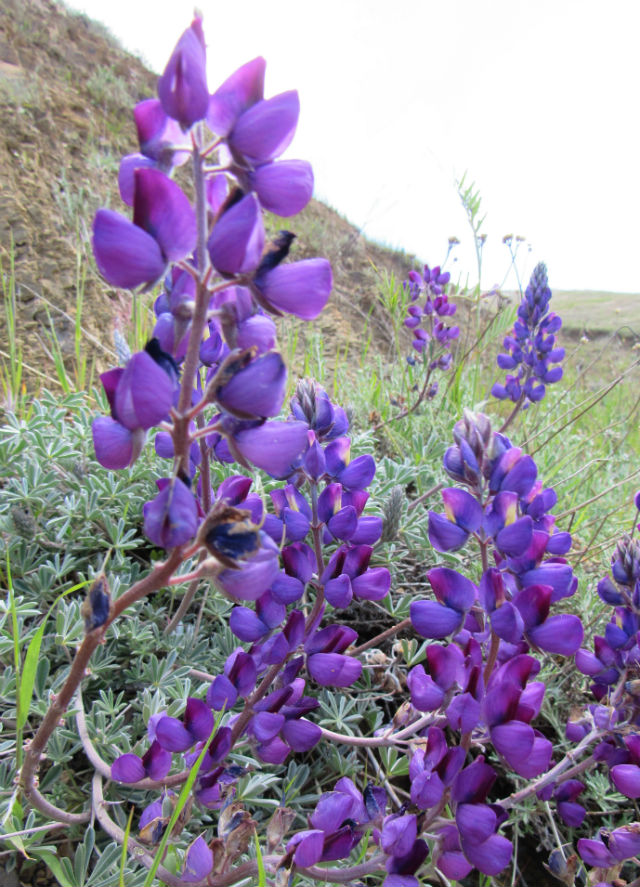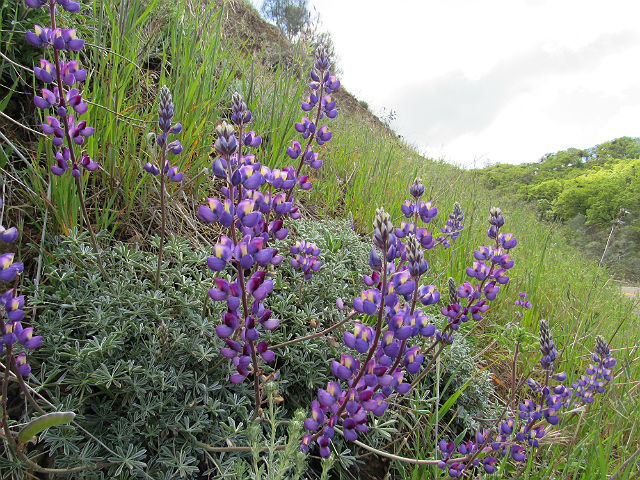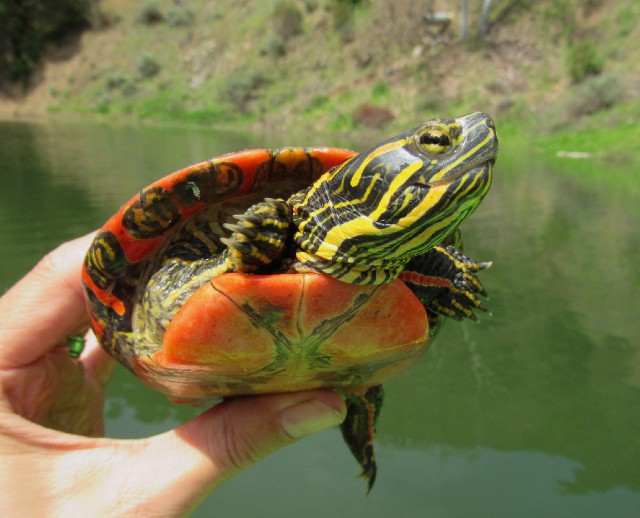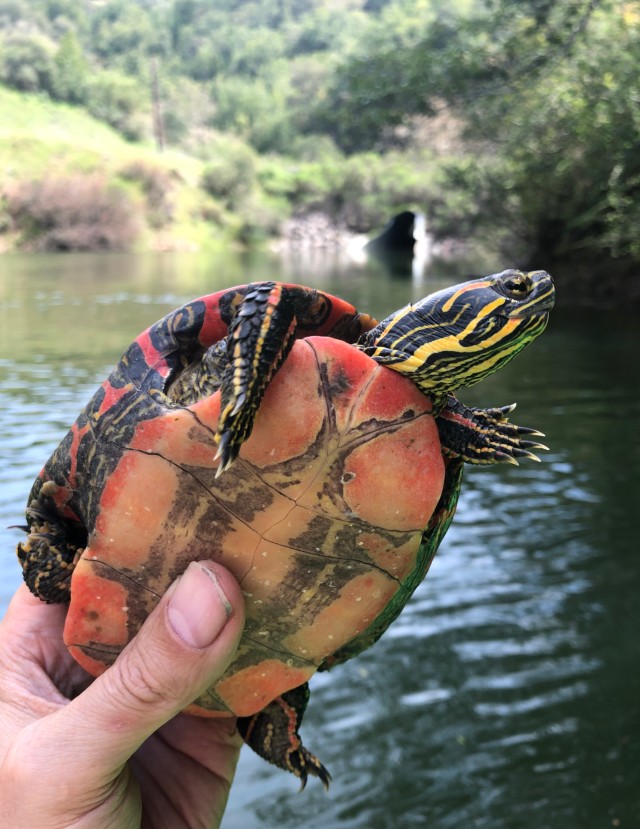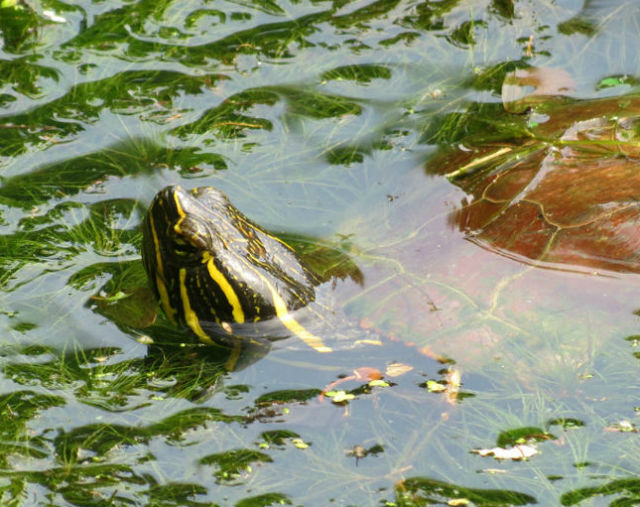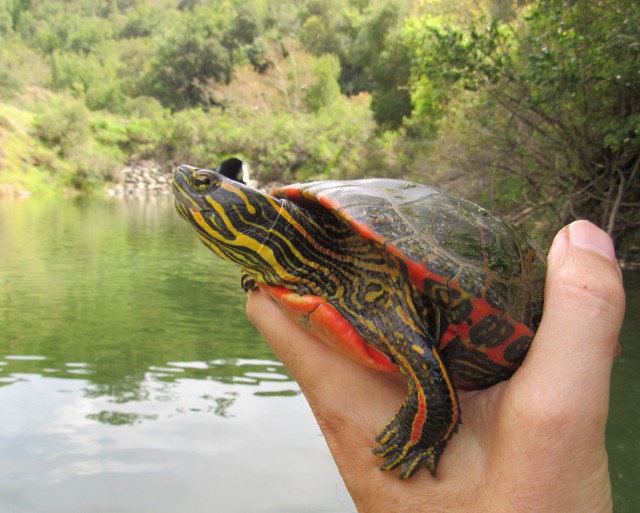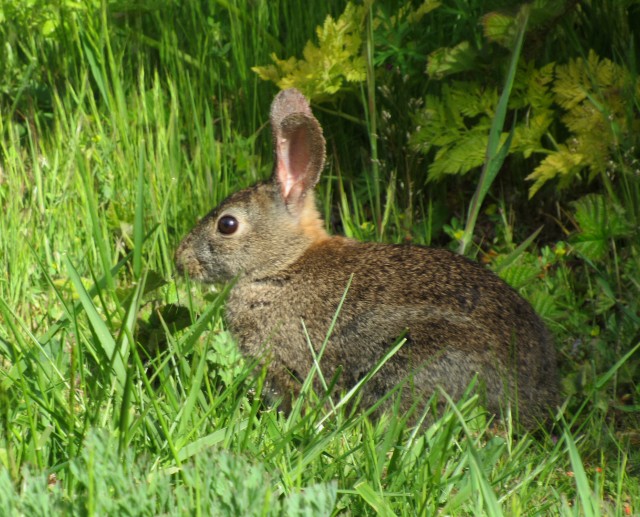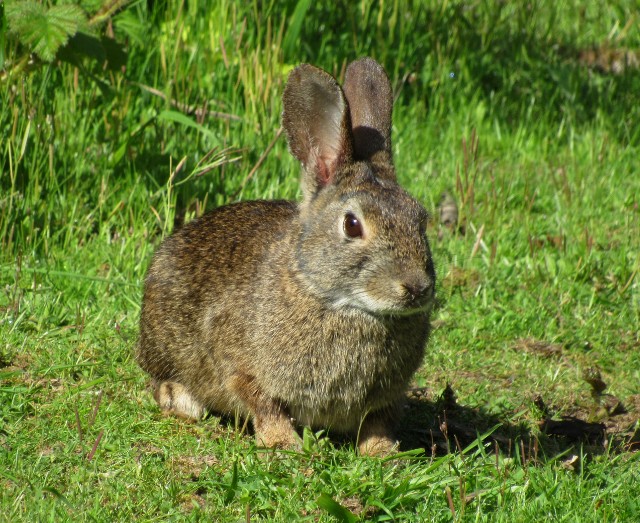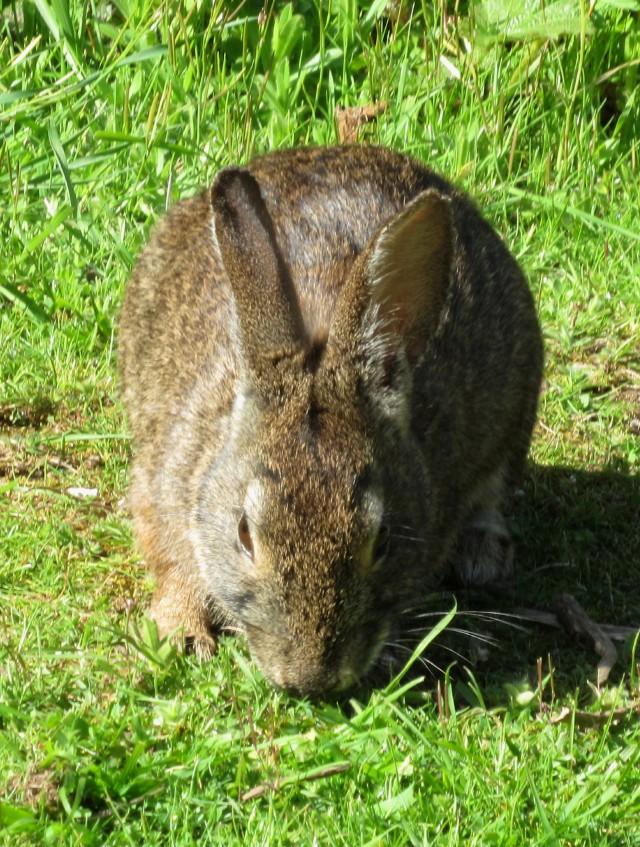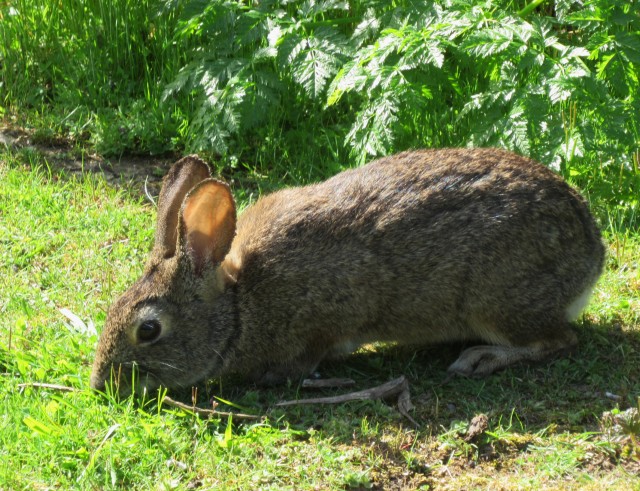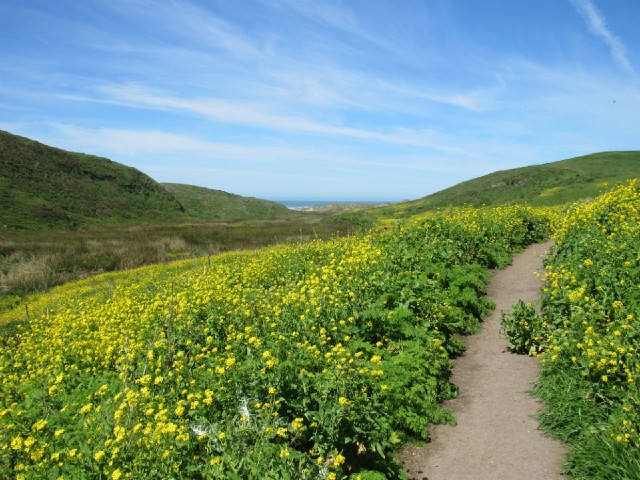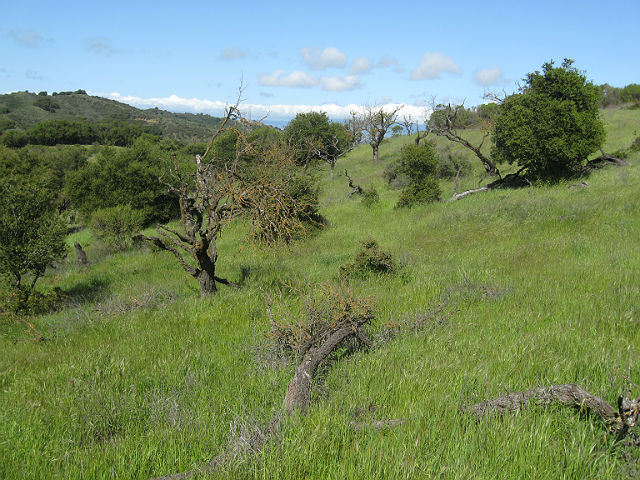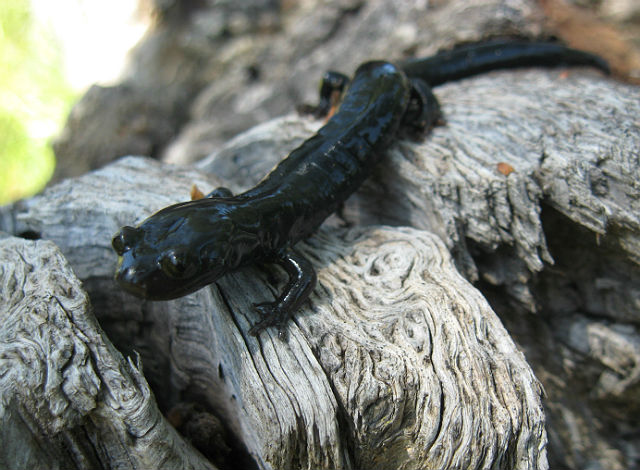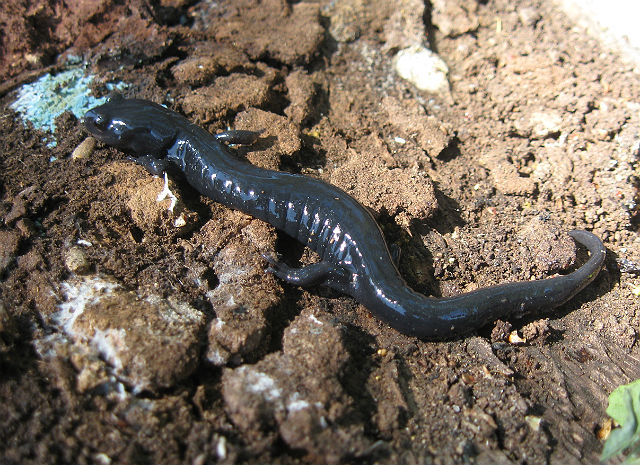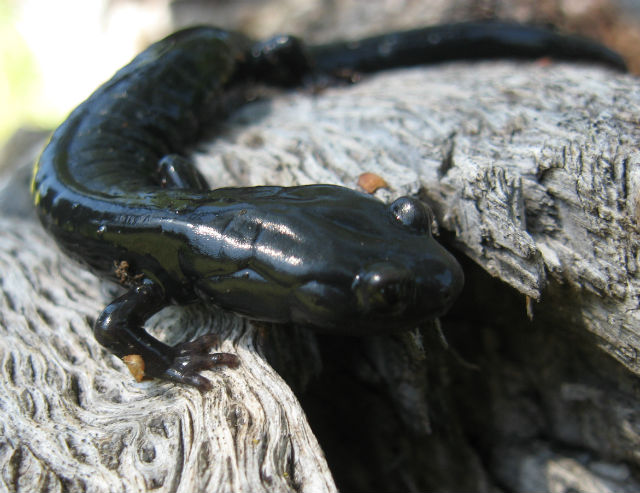While exploring Mount Hamilton in north-central California, it was hard not to notice this colorful purple wildflower.
This plant grows in the hills and valleys of the Golden State. It requires good drainage and needs little water once the roots are established.
When Silver Bush Lupine blooms, its flower is light blue to purple on three- to twelve-inch stalks. Its foliage is silver with a feathery texture.
Not only is it beautiful, but this plant performs a valuable function. It is a member of the Legume Family and has nitrogen-fixing nodules on their roots.
As a result, they are important for soils, as they can take nitrogen from the air and “fix” it into the ground for the purposes of plant growth and prosperity.
Like other perennial shrubs, Silver Bush Lupine can live for many years.

